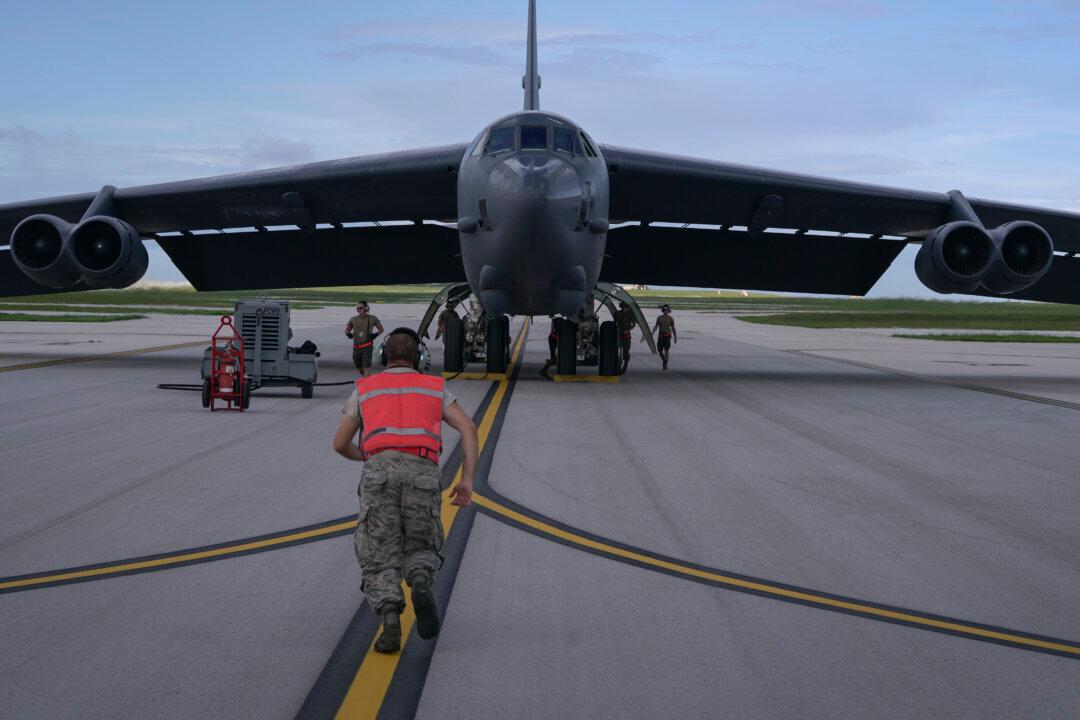A B-52 bomber flew non-stop from Louisiana to the South China Sea, where it joined two aircraft carriers over the weekend, in the latest demonstration of a new U.S. strategy designed to keep adversaries on their toes.
“One B-52 Stratofortress bomber from the 96th Bomb Squadron, 2nd Bomb Wing, Barksdale Air Force Base, Louisiana, took off from home station and participated in a maritime integration exercise with the USS Nimitz and USS Ronald Reagan carrier strike groups in the South China Sea before landing at Andersen Air Force Base, Guam,” according to a July 5 statement from the U.S. Air Force.





